The turtle with the bright yellow throat is special for many reasons, one of which is that it is a globally endangered species.
Being globally endangered puts the Blanding’s Turtle in the same category as the Asian Elephant, the Blue Whale, and the tiger. The difference is that the Blanding’s Turtle is found in Canada and can even be found within cities like Toronto and Ottawa.
Why is the Blanding’s Turtle so Endangered?
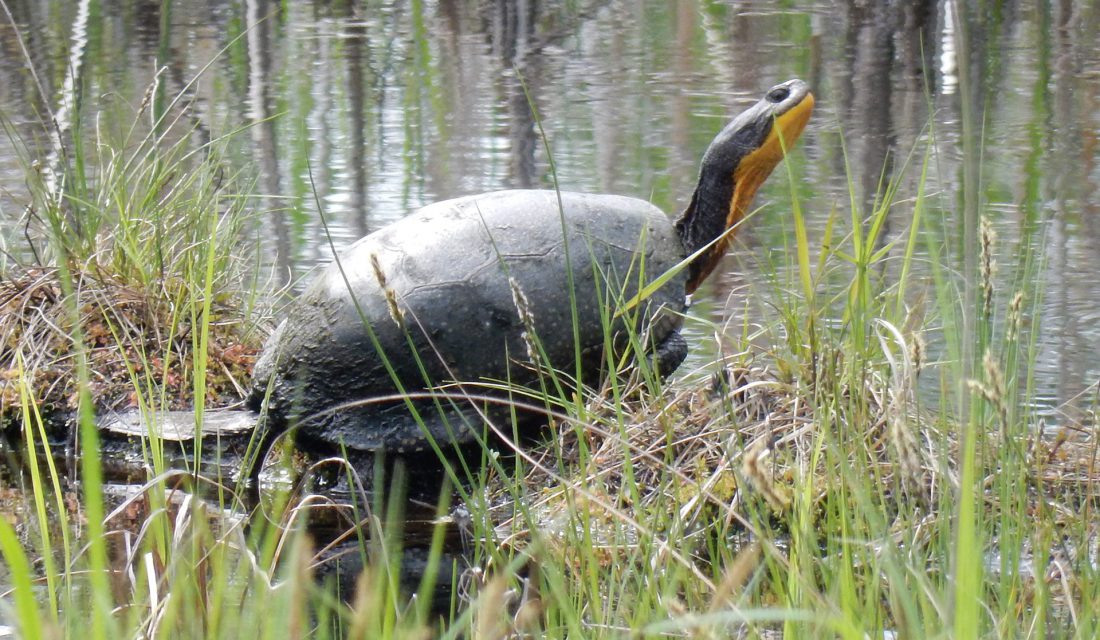
Three main reasons:
- Loss of wetland habitat over the past century
- Road mortality, which often affects adult females looking for places to lay eggs
- Increased nest predation from abundant predators like raccoons
At the Canadian Wildlife Federation, the Blanding’s Turtle has been the focus of much of our turtle conservation work over the past few years. We have incubated eggs from their nests and released the hatchlings into the wild to help ensure the next generation will survive. We also have conducted surveys to try and find Blanding’s Turtles in previously undocumented areas. One photo along with accurate locality information can result in habitat protection for the wetland and adjacent wetlands through the Ontario Endangered Species Act.
You Can Help Save the Blanding’s Turtle!
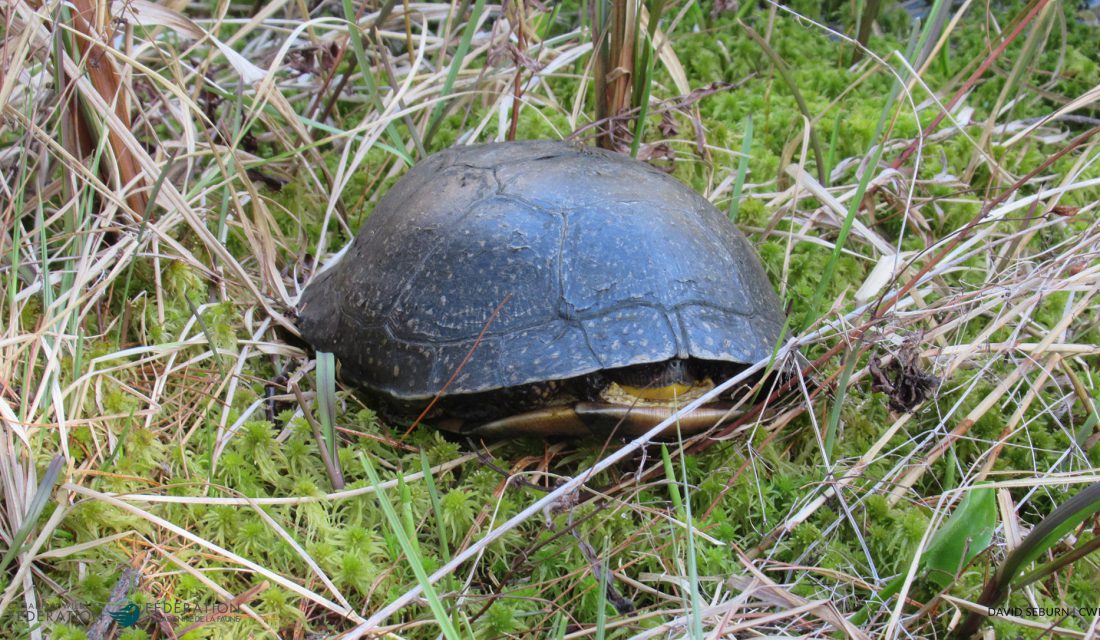
The easiest way to help save the Blanding’s Turtle is by reporting one, if you are lucky enough to find one in Ontario. The easiest way to report an observation is by using iNaturalist. Ideally, the photo must be clear enough to see the yellow throat to identify the species. If you can’t get a photo of the throat at least try to get photos of the top shell from a couple of different angles to improve the chance it can be identified. An observation of a Blanding’s Turtle basking on a log, or one crossing a road can lead to habitat protection if the report is from a previously undocumented area. If the turtle is on a road, please add a comment such as AOR (for alive on road) or DOR (dead on road). This helps us to identify observations that are on roads and better understand where roads are a major threat to Blanding’s Turtles.
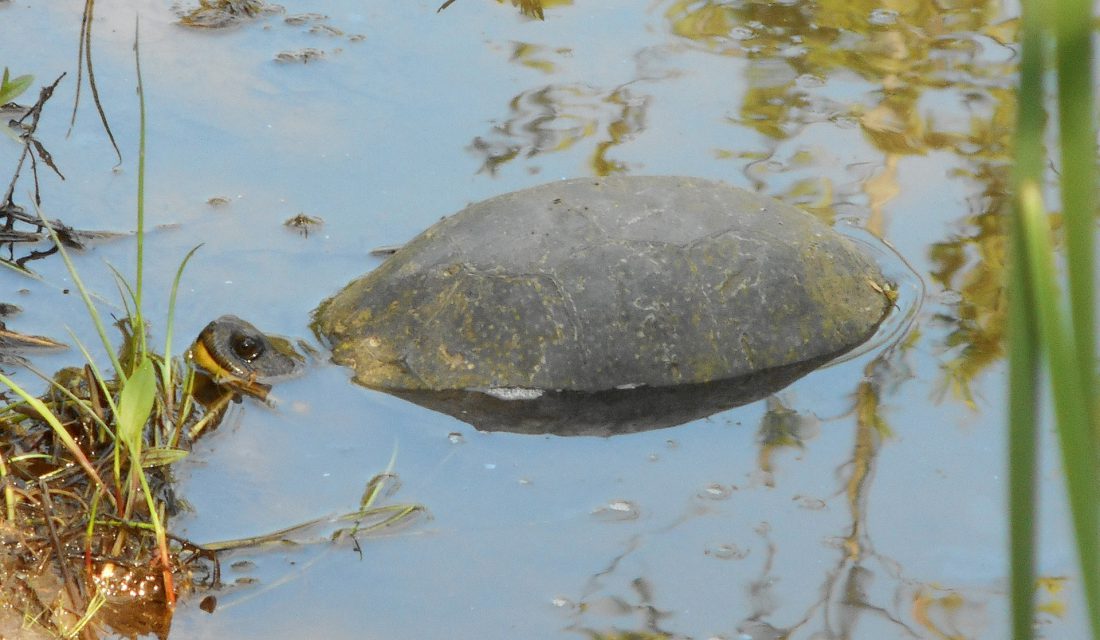
If you are lucky enough to have Blanding’s Turtles nesting on your property, consider making and installing nest protectors to keep the eggs safe from predators. You can download our guide to making a nest protector from our website. If you find a Blanding’s Turtle nesting in the Ottawa area, please let us know as we collect and incubate their eggs to increase the chance of the eggs hatching successfully.
Turtles, as a group, have been around for more than 200 million years. They outlived the dinosaurs. If we all work together we can help ensure that the Blanding’s Turtle will still be here many years from now.

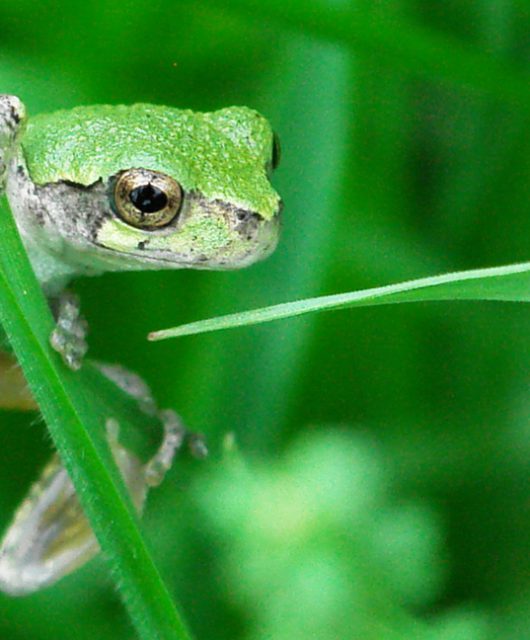

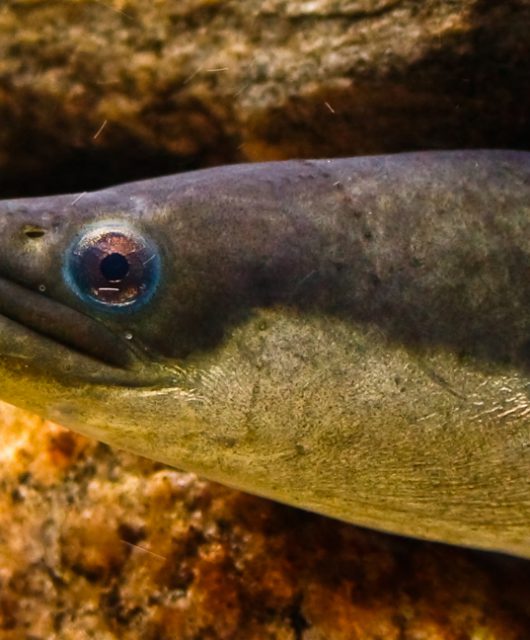

1 comment
Let’s save all animals big and small regardless of their birth species. They are intelligent, cute and human has a chance to learn from them too.